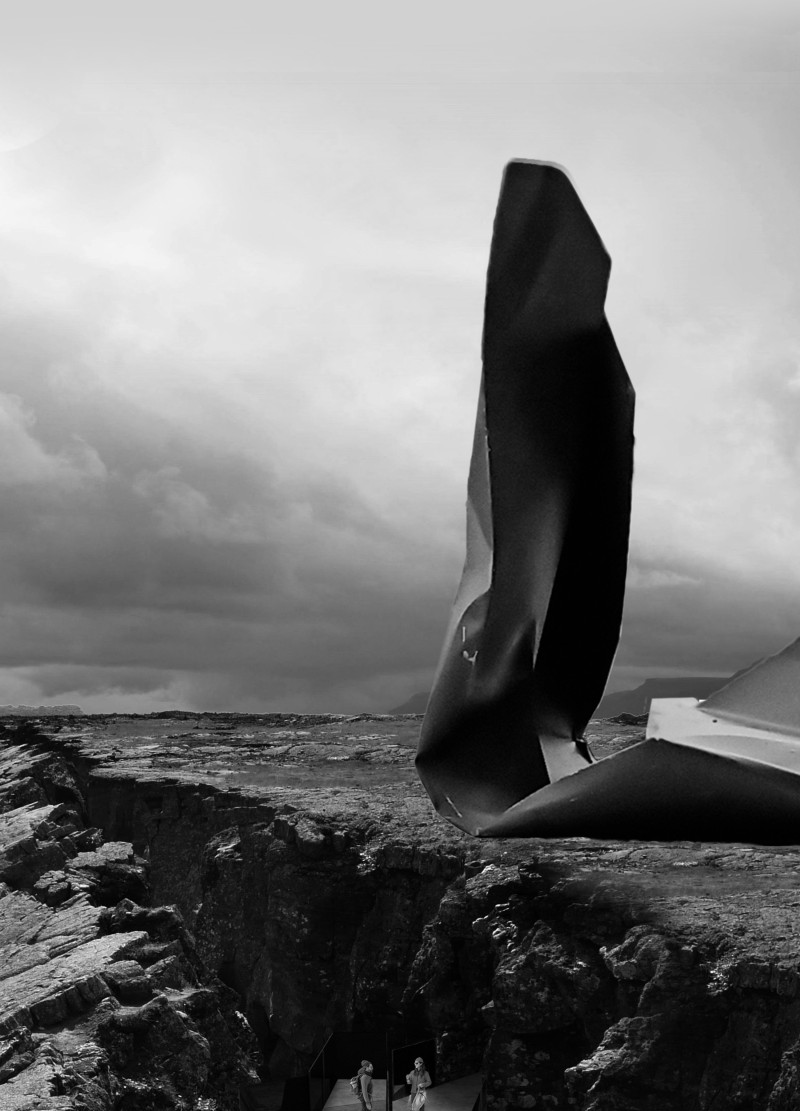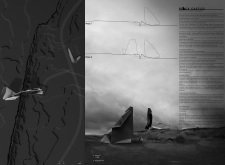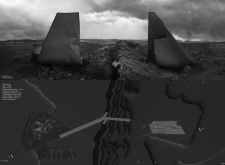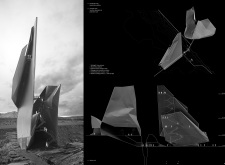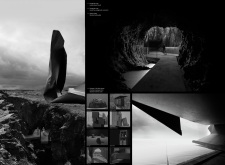5 key facts about this project
The design is located in Iceland, near the Grjotagja cave, which is known for its geothermal hot springs. It emphasizes a relationship with the unique geological features of the region, specifically the dynamics between the Eurasian and American tectonic plates. The concept focuses on dual functionality, with a panoramic tower situated on the European plate and potential tourist accommodations on the American plate. This arrangement highlights the commitment to connecting architecture with the surrounding landscape.
Panoramic Tower
At the center of the design is the panoramic tower, serving as a key feature for visitors. It includes essential amenities such as an entrance, office, dining area, storage, and restrooms. Internal ramps guide visitors to two viewing terraces. These terraces provide wide views of Iceland's rugged terrain, allowing the tower to function as both a practical structure and an engaging observation point.
Underground Connectivity
A significant aspect of the design is the underground connection between the two tectonic plates. This tunnel offers visitors a chance to explore the geological phenomena that shape the landscape. The pathway serves a practical purpose while also creating an immersive experience that highlights the powerful tectonic forces at work in the area.
Material Considerations
The structural design of the panoramic tower features a reticular steel frame. This choice supports the structure against vertical loads and environmental conditions commonly found in Iceland. Composite materials are used for the external cladding, providing durability for the tower in harsh weather. These material selections reinforce both the functionality of the design and its long-term resilience.
Tourist Accommodations
Small bungalows make up the proposed tourist reception area, situated on the American plate. This arrangement allows the accommodations to align with the surrounding landscape. Each bungalow is carefully placed to enhance the connection to the natural environment. They optimize views of the volcanic scenery, allowing visitors to engage with the unique geographical context.
Pathways link various features of the site, encouraging exploration and interaction. Visitors can experience the relationship between the built environment and geological formations. Each route invites them to discover the natural wonders that characterize Iceland's dynamic landscape.


